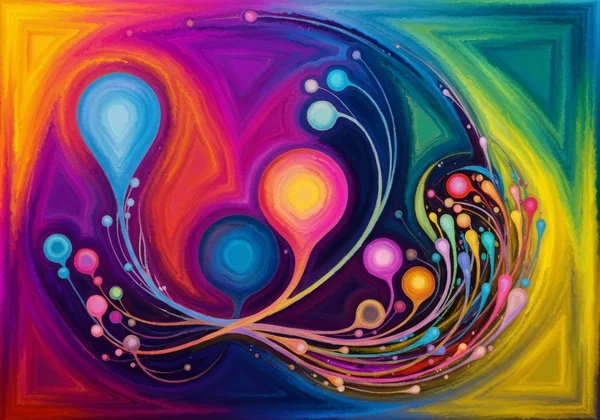Kinsey Scale 1 & 2: Predominantly Heterosexual Meaning
Navigating the landscape of your own identity can feel like exploring a vast, uncharted map. You might have questions about your feelings, attractions, and experiences that don't seem to fit neatly into simple boxes. If you've encountered the Kinsey Scale, you're already on a path of deeper self-understanding. But what do the numbers actually mean, especially those that fall somewhere in the middle? Many people wonder, What is the Kinsey Scale? It’s a tool designed to map the beautiful complexity of human sexuality, and understanding scores like 1 and 2 is a crucial step in that journey. This guide is here to walk you through it with clarity and support. If you're ready to begin, you can start your exploration on our homepage.

What Do Kinsey Scale Scores 1 & 2 Really Signify?
The Kinsey Scale, developed by Alfred Kinsey and his colleagues, was revolutionary because it presented sexuality not as a binary (heterosexual or homosexual) but as a fluid continuum. The scale runs from 0 (exclusively heterosexual) to 6 (exclusively homosexual). Scores 1 and 2 represent the nuanced experiences of individuals who are predominantly heterosexual but have some degree of homosexual feelings or experiences. Let's break down what each score represents in this spectrum of identity.
Understanding Kinsey 1: Mostly Heterosexual, Incidental Same-Sex Experience
A score of 1 on the Kinsey Scale describes someone who is predominantly heterosexual, with only incidental homosexual experience. What does "incidental" mean in this context? It's not about passing a test or meeting a quota; it’s about acknowledging the subtle complexities of your inner world. This could manifest as:
- Fleeting attractions or fantasies about someone of the same sex.
- Curiosity about same-sex relationships or encounters.
- A single, isolated same-sex experience that doesn't define your primary orientation.
Receiving a score of 1 doesn't invalidate your heterosexual identity. Instead, it acknowledges that human sexuality is rarely absolute. It validates the part of you that may have had incidental experiences or thoughts, integrating them into a more complete picture of who you are. It’s a recognition that a sliver of curiosity or a single past event is a valid part of your personal story, without needing to overhaul your entire sense of self. To understand your unique experience, you might want to discover your score.
Decoding Kinsey 2: Predominantly Heterosexual, More Than Incidental Same-Sex Experience
A score of 2 on the Kinsey Scale represents someone who is predominantly heterosexual, but with more than incidental homosexual experience. This moves beyond the fleeting or isolated nature of a score 1. An individual scoring a 2 might find that their same-sex attractions or behaviors are more consistent or significant, yet their overall orientation remains primarily directed towards the opposite sex. This could look like:
- Recognizing a consistent pattern of attraction to certain people of the same gender.
- Engaging in more than one same-sex encounter or having a brief same-sex relationship.
- Finding that same-sex fantasies are a more regular part of your inner life.
Again, this score is not a label but a descriptor. It captures a reality for many people whose sexual behavior and attractions are not 100% focused on one gender. It signifies a meaningful, but not predominant, homosexual component in one's overall sexual profile. It’s a space that honors the depth and reality of these feelings, affirming that they are a significant part of your unique identity.
Exploring the "Predominantly Heterosexual" Identity
Identifying as "predominantly heterosexual" can be an incredibly liberating experience. It allows for nuance and frees you from the pressure of absolute labels. It’s an acknowledgment that your feelings are valid, even if they don't fit into the rigid categories society often presents. This identity is about embracing the "mostly" while honoring the "also."

Navigating Incidental Same-Sex Attractions or Experiences
It is completely normal to have questions when you experience attraction that feels unexpected. You might wonder, "What does this mean about me?" or "Does this change who I am?" The beauty of the Kinsey model is that it tells us these experiences don't have to change anything unless you want them to. They are simply part of the rich tapestry of human desire.
Think of it as a spectrum of taste. You might primarily enjoy savory foods, but that doesn't mean you can't appreciate a sweet dessert from time to time. That appreciation for sweetness doesn't make you any less of a "savory food person." Similarly, incidental attractions don't erase your primary orientation. They enrich it. Exploring this is part of a healthy personal journey.
Beyond Labels: Embracing Your Unique Journey
Ultimately, the Kinsey Scale is a tool for reflection, not a diagnostic test that delivers a permanent label. Your score is a snapshot of your feelings and experiences at a particular point in time. The most important takeaway is the permission to be yourself, in all your complexity. Whether you identify as heterosexual, bisexual, or prefer no label at all, your journey is your own.
The goal is not to fit perfectly into a number but to use that number as a starting point for introspection. It’s a chance to ask yourself questions, explore your feelings without judgment, and embrace the authentic you. This process of identity exploration is ongoing and deeply personal. To begin this reflection, you can take the free test on our secure platform.
Is a Kinsey 1 or 2 Score Common? Debunking Myths
One of the biggest anxieties people have when exploring their sexuality is feeling alone. You might wonder if your experiences are "normal." The research conducted by Alfred Kinsey himself revealed that very few people exist at the absolute poles of the scale. A significant portion of the population falls somewhere in between 0 and 6, making scores like 1 and 2 incredibly common.

The Kinsey Continuum: A Spectrum, Not Categories
The most powerful aspect of the Kinsey Scale is its framework as a continuum. Life is not lived in black and white, and neither is sexuality. Your feelings, attractions, and behaviors can exist along a vast spectrum. Scores 1 and 2 are not "almost heterosexual" or "not quite bisexual"; they are valid points on this spectrum, representing a unique and common human experience. This perspective helps dismantle the myth that you must choose one side or another, offering a more compassionate and realistic view of identity.
How Your Feelings and Experiences Can Evolve
Another common myth is that your sexual orientation is fixed and unchangeable from birth. While for some people it is, for many others, it exhibits sexual fluidity. This means that your attractions and identity can shift and evolve throughout your life. A person might identify with a 1 at age 20, a 2 at age 30, and something else entirely at age 40. This is not a sign of confusion; it is a testament to your capacity for growth and change. Your Kinsey score reflects where you are now, and our platform is a safe place to get your snapshot whenever you feel the need to check in with yourself.

Your Journey of Self-Discovery Continues
Understanding where you might fall on the Kinsey Scale, especially with scores like 1 and 2, is a powerful act of self-awareness. It confirms that being "predominantly heterosexual" is a valid, nuanced, and common identity. These scores are not judgments; they are invitations to understand yourself more deeply, to honor all parts of your experience, and to release the pressure of rigid labels.
Your journey is unique, and it continues to unfold with every new experience and reflection. The most important thing is to approach it with curiosity and kindness. If you’re ready to gain more insight into your personal place on the spectrum, we invite you to take the next step. Your confidential exploration awaits. Start your journey today.
Frequently Asked Questions About Kinsey Scores 1 & 2
What does a score of 1 on the Kinsey Scale specifically mean?
A score of 1 means you identify as predominantly heterosexual but have had incidental homosexual thoughts, feelings, or experiences. It acknowledges minor or isolated instances of same-sex attraction without changing your primary heterosexual orientation.
What does a score of 2 on the Kinsey Scale signify?
A score of 2 signifies that you are predominantly heterosexual but have more than incidental homosexual experiences. This indicates that same-sex attractions or behaviors are more frequent or significant than in score 1, though your primary orientation is still toward the opposite sex.
Does a Kinsey score of 1 or 2 mean I'm bisexual?
Not necessarily. The Kinsey Scale measures behavior and attraction on a spectrum; it doesn't assign identity labels. While bisexuality generally involves attraction to more than one gender (often represented by scores 2, 3, and 4), whether you adopt the label "bisexual" is a completely personal choice. Many people with a score of 1 or 2 continue to identify as heterosexual.
Can my Kinsey Scale score change over time?
Yes, absolutely. The concept of sexual fluidity suggests that a person's attractions and self-perception can evolve over their lifetime. A score is a reflection of where you are now, not a permanent diagnosis. It can be helpful to explore your results at different points in your life to better understand your personal journey.